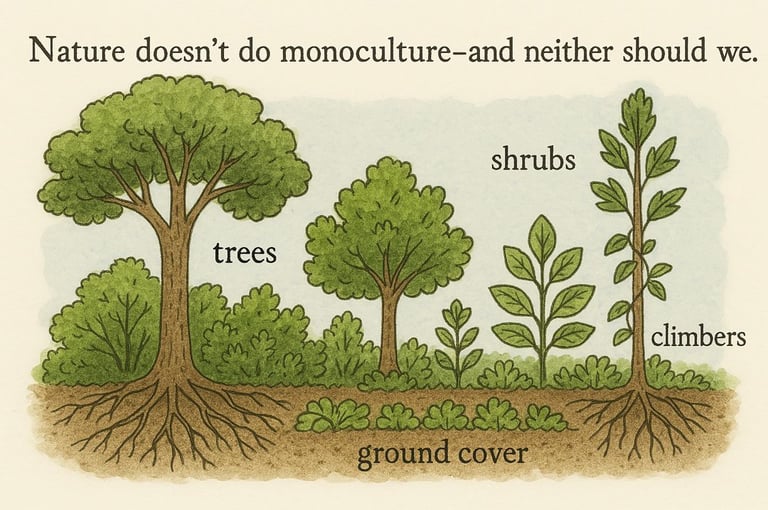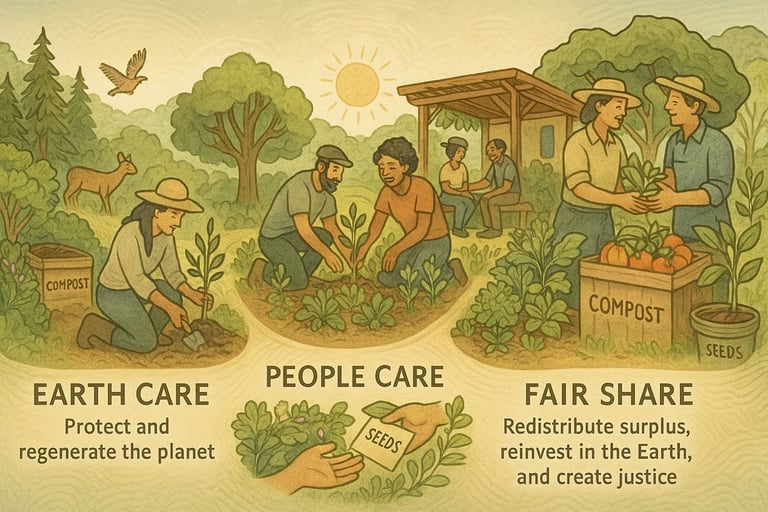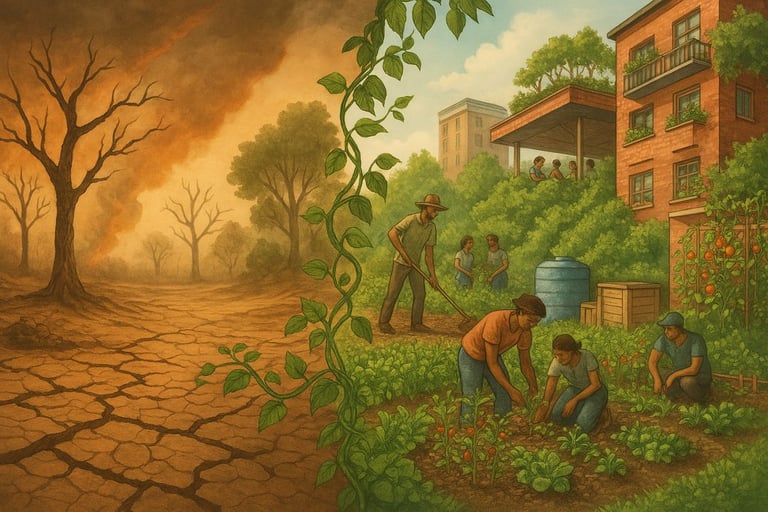Perma-Whatnow??
Ever heard someone drop the word "permaculture" in conversation… and you nod along while having no clue what it means? You’re not alone. Let’s clear the air and dig a little deeper into this “buzzword” that’s actually far more rooted than it sounds.
PERMACULTUREREGENERATIVE AGRICULTURE
Anindya Chaudhuri
4/2/2025


So, What Is Permaculture, Anyway?
It may sound like something from a sci-fi utopia, but permaculture is very real. The term blends “permanent” + “culture” (or “agriculture”, or both, depending on who you ask).
At its core, it’s about creating sustainable systems that work with Nature and not against Her. Think of it as a philosophy, a design system, and even a lifestyle that respects the patterns and intelligence of the natural world.
Imagine This
Picture a lush forest.
No tilling. No synthetic fertilizers. No one debating pesticide brands.
And yet, every living thing thrives (a mature old-growth forest can support about 10,000 to 50,000 different species).
The trees provide shade. Fallen leaves turn into rich, dark soil. Every organism plays a role. An unbelievably vast network finding balance within itself.
That’s permaculture in a nutshell. Setting up systems that mimic the quiet genius of natural ecosystems.
But Wait, There’s More
Permaculture isn’t just about gardening or hugging trees (although we highly recommend tree-hugging).
It touches water systems, renewable energy, natural building, social structures, and ethical land use.
It’s a design for how we live; productively, beautifully, and responsibly.
How It Works
Permaculture design is all about patterns and relationships in Nature.
It avoids “one-size-fits-all” thinking. Instead of growing a single crop and hoping for the best, you build diverse, layered systems that support themselves. Also, permaculture design is drawn deeply from the local context of a region.
Example?
Plant nitrogen-fixing legumes beside heavy feeders. No cows and cowdung around to make Jeevamrit?
Use chicken tractors (we will get to those later) to fertilize soil and control pests instead!
Yes, chickens can be a vital part of your design team.
The Three Ethics of Permaculture
Permaculture is grounded in three simple, powerful principles:
Earth Care – Protect and regenerate the planet.
People Care – Help each other thrive, not just survive.
Fair Share – Distribute surplus fairly, reinvest in the Earth, and create justice.
These aren't just idealistic dreams. They’re guiding ethics for real, practical action.
Why It Matters Right Now
In a world on fire (often literally), permaculture offers something we desperately need: hope grounded in action.
It empowers people (rural or urban), to grow food, conserve water, regenerate soil, and build resilient communities.
And no, you don’t need a farm. Urban permaculture is blooming; on rooftops, balconies, and even abandoned lots.


Written by Anindya Chaudhuri
Founder, Permaregen | Regenerative Designer | Educator
Ready to Dig In?
If this resonates, you’re already part of the movement.
Permaculture is quirky, practical and powerful.
And at Permaregen, we’re here to make it accessible one bite at a time.
So, the next time someone says, “Perma-whatnow??”
You’ll know exactly what to say.
Further Reading: Bill Mollison & David Holmgren – Permaculture: A Designers' Manual


Community
Join us in exploring regenerative agriculture practices!
Write to Us!
Sign Up for Our Newsletter!
connect@permaregen.com
© Anindya Chaudhuri 2024. All rights reserved.
